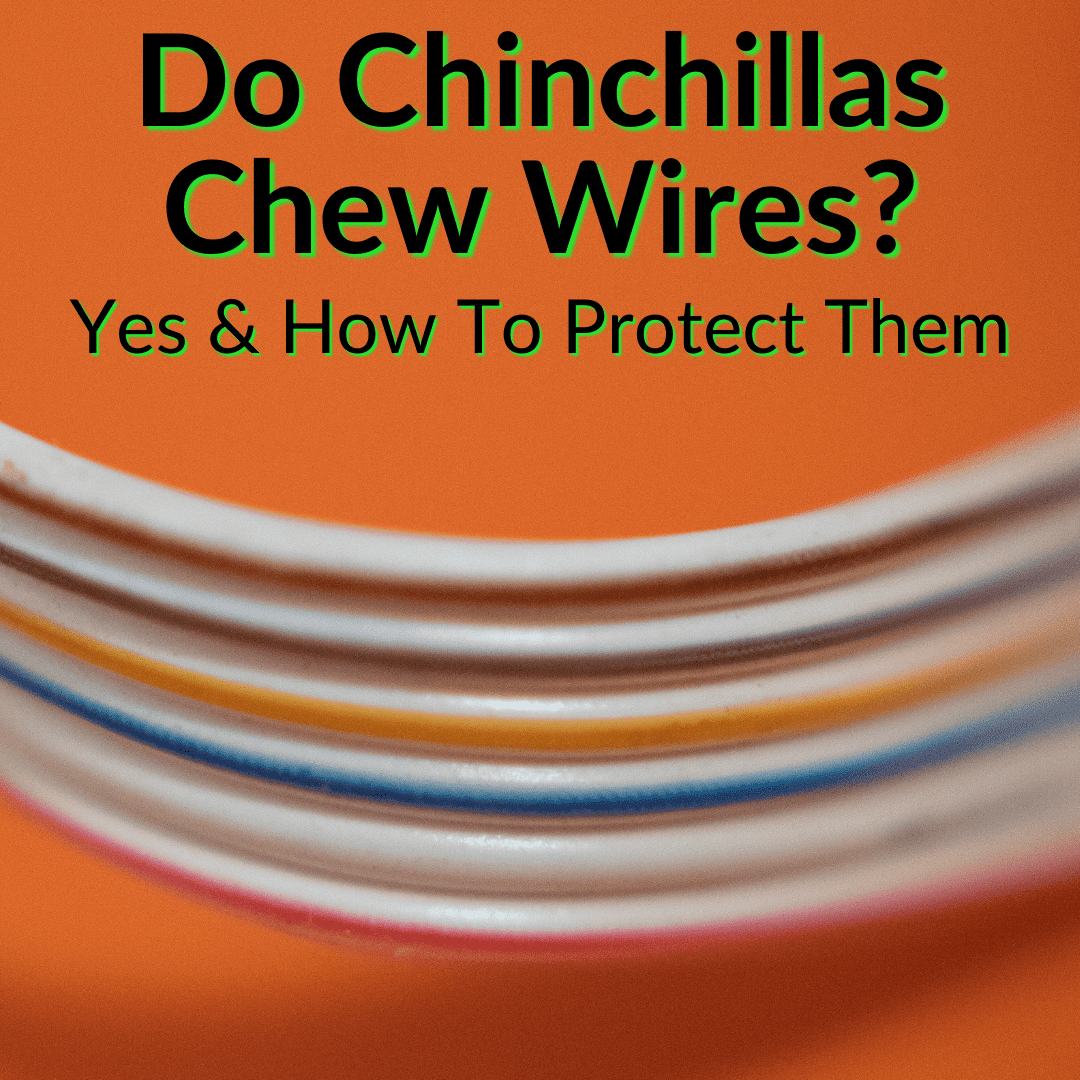
At least 30 minutes every single day. Ideally, an hour.
But there are a lot of potential dangers for a chinchilla outside the safety of its cage.
So you need to thoroughly chinchilla proof the room you will use for playtime.
The first big danger that probably pops into your mind are electrical cords.
Do chinchillas chew wires, or is this not something to worry about?
They can chew on cords. Keep reading to learn everything you need to know about chinchillas chewing wires.
We’ll show you a few different ways you can make sure wires are no longer a danger top your precious little pet during playtime.
Contents
- 1 Do Chinchillas Chew Wires?
- 2 Chinchillas Chew Wires: Final Thoughts
Do Chinchillas Chew Wires?
Yes, chinchillas chew wires. This can include any exposed wires, like electrical cords, cables, chargers, and even phone lines.
It’s essential to use wire protectors or to completely remove all wires from the area where your chinchilla is allowed out of the cage to play.
With that being the case, what’s the best approach we can take to keep our rooms completely chinchilla proofed?
Well, you actually have several options. We’ll get into those below. I’ll also break down exactly how I set up my chinchilla play area and how I ensure my chinchilla is always safe during playtime.
But first, let’s quickly talk about the reason chinchillas chew wires.

😕Adopting and caring for a new chinchilla can be intimidating and confusing. But it does not have to be.
Be sure to check out my full digital eBook “Avoiding Critical Mistakes: Ultimate Chinchilla Care eBook” for the best advice, tips, and tricks and supply recommendations to make adopting and caring for a chinchilla much more comfortable and easier to understand.
You can learn more about this eBook offer using the link directly below.
Learn more here:👉 Avoiding Critical Mistakes: Ultimate Chinchilla Care eBook Offer
Why Chinchillas Chew Wires
All chinchillas chew. It is in their DNA to chew. They don’t specifically chew on wires. They simply chew on anything that seems chewable. And wires are certainly that.
If you want to avoid issues with dangerous wires and cords, you need to understand what you can do to eliminate the possibility of an accident happening in the first place.
One of the easiest ways to do this is to pick a room where your chinchilla can roam freely that does not have any wires, or where it is easy to simply remove all wires and cords entirely.
However, I completely understand that this is not always possible. You may need to lean more towards proofing your chinchilla room to get the job done. That means covering any exposed wires, among other things.
Chinchilla Proofing All Cords And Wires
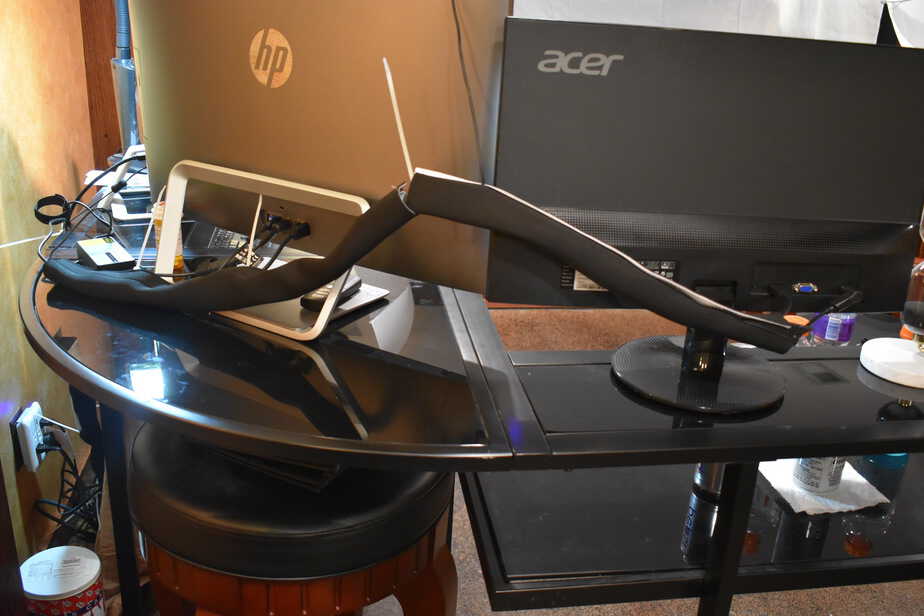
Chinchillas will chew on just about anything if given a chance and if they don’t have proper supervision.
Trust me, I know from experience.
I’ve had my 5-year old female chinchilla for quite some time now, and she is an avid chewer. Electrical cords, or any wires for that matter, are no different than anything else and look equally enticing to her.
Obviously that can be dangerous.
If something can be chewed, you can consider it one of your chinchilla’s favorite things to play with. These rodents need to chew to file down their teeth and if they can reach it, you can bet money that they will chew it.
Part of owning a chinchilla means being an ethical pet owner.
This includes dedicating at least a small amount of time each day to get your chinchilla out of its cage and interact with it. It’s nothing difficult and nothing that makes owning a chinchilla a hard task.
But when you do this, you need to make sure that all wires and cords are out of your chinchilla’s reach. If it is a room in the home where you can simply remove the cords, wires, or whatever is plugging into the wall, that is the safest and easiest option you have.
If it’s a room where you do not have this luxury, you need to make sure that you cover the wires and cords with cord protectors (more on this shortly).
The important thing to understand is that you either need to remove the cords, or cover them. It is as simple as that and it’s all part of chinchilla-proofing a room in advance.
Something else that is important to note is that chinchillas need this time out of the cage each day or some form of interaction, so you can’t just avoid the cord problem by keeping your pet locked in its cage all day.
Chinchillas are friendly, social and loving pets. Chinchillas need social interaction, either with you or another chinchilla.
Too long without social interaction can make your chinchilla stressed out and feeling a little down in the dumps. It can even cause your chinchilla to become depressed.
Not to mention the most significant catch of them all.
The more bored a chinchilla becomes, the more likely it is to chew, so creating a safe space and removing the ability to chew these dangerous wires is always going to be your best approach.
It is also imperative to ensure your pet has plenty of healthy things to chew on. chew toys, apple sticks, hay cubes are all great. Another great options is pumice stone for chinchilla chewing.
This is when chinchilla owners begin wondering what is the best approach to creating a room in the home that’s chinchilla safe. I want to hit on these details next.
Choosing The Best Room For Playtime With Your Chinchilla
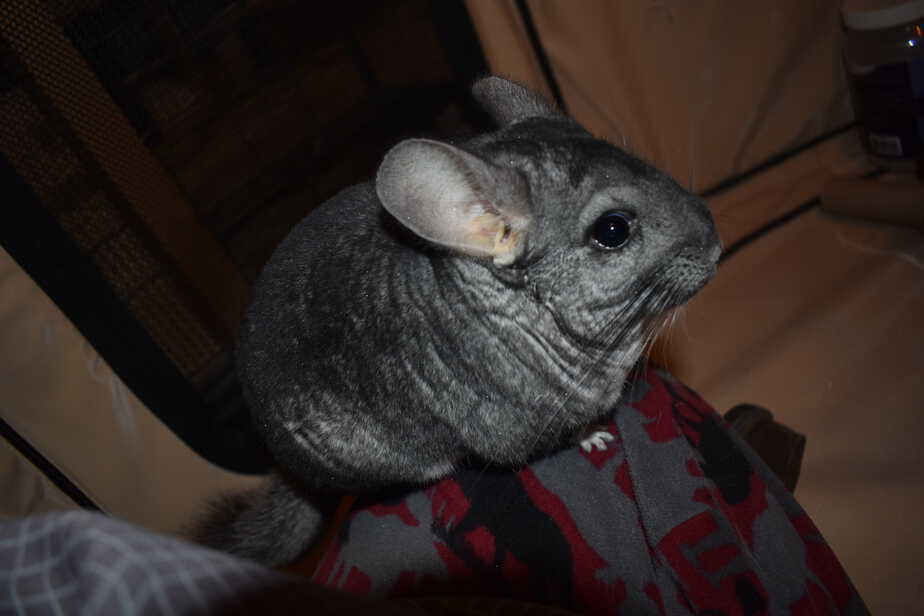
The first step in chinchilla-proofing a room in which to interact with your chinchilla is to pick the actual room. You have a few considerations to keep in mind when choosing the best room for your chinchilla.
To choose the ideal room, you first need to understand chinchillas a little better.
First and foremost, chinchillas poop just about every step they take. This means you want to choose a room that will make it easy to clean up poop, i.e. one with tile or hardwood floors is definitely better than one with carpeting.
Don’t worry, though. Chinchilla poop doesn’t smell and it comes out in dry, hard nuggets. So even carpeting won’t be a huge problem. But I still prefer not to have poop on my carpet. I’m weird like that.
And poop isn’t the only odorless part of these rodents. Chinchillas don’t smell in general, unless they have some sort of health problem.
But chinchillas will pee, too. And that is the one thing that can smell, if you let it sit too long. So don’t let it sit.
But again, this is where a carpet just isn’t a good idea. Because it will get some urine on it eventually. Even if your chin is potty trained to pee in a litter pan, it may still urinate during playtime.
My chinchilla rarely pees outside of her cage, but it’s certainly possible, so that is another factor to consider. This led me to only consider rooms in my home that have hard floors and no carpet.
I use my home office in my basement for playtime with my chinchilla. The big drawback of that space is that it has the most wires.
However, I wanted this room, because it has no carpet and it has the best possible temperature for my chinchilla, to avoid overheating and other dangers.
I fixed the problem by buying a bunch of wire protectors just like these:
Those made my life much easier, because they allowed me to choose a room full of wires, that was otherwise by far the best room in my home for my chinchillas.
I just mentioned the temperature. That is another big factor you need to consider when you choose a playroom for your chinchilla.
Never forget that chinchillas have incredibly dense fur, with over 80 hairs per follicle.
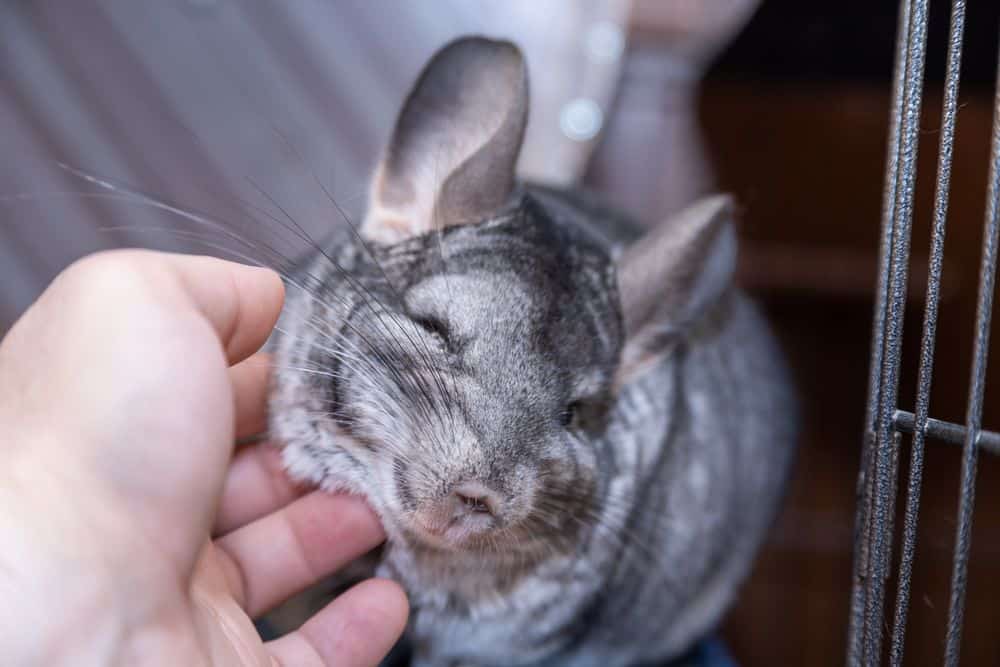
Chinchillas also can’t sweat.
Considering those two points, it’s easy to understand that you need to use a room that has low enough temperatures. Open spaces with the correct temperatures allow your chinchilla to jump, climb, and play without the danger of your chinchilla overheating.
In many cases, you will run into the same issue I did, where the best room in your house has electrical cords that you can’t just remove.hese primary concerns taken care of, we can move onto the last primary concern which comes down to electrical cords and keeping them away from our favorite furry pets.
Keeping Chinchillas Safe From Electrical Cords
Now comes the fun part: keeping your chinchilla safe from electrical cords by making it so it can’t chew them easily.
The easiest way to do this is obviously to have no electrical cords in the room you want to use for chinchilla playtime.
But this is usually easier said than done. It certainly was in my case.
As mentioned, the room where I keep my chinchilla is the same room that I use for my home office in my basement.
This room is also the best one to use as a play room. It checks all the other boxes: hard floors, cold temperatures, and a relatively safe environment. But it has tons of cords my chinchilla could chew on.
So here is what I did about it.
I started by using zip ties to organize all the wires neatly. I did this with my computers and any other device in the basement that had a cord exposed that my chinchilla could have quickly begun chewing on.
Simply take all wires that are close together, neatly bunch them together, and use zip ties to bind them into one thick cord. This makes step 2 much more manageable.
Step 2 to keeping your chinchilla safe involves purchasing some form of cord protector or cord wrapping. For my room, I bought the Velcro wrap-around cord protectors (the ones I linked to above).
They are thick, cheap, and it is super quick and easy to wrap all your cords with them.
I did this on every cord in the basement except for my iPhone charger, which I simply unplug and set aside when I get my chinchilla out of the cage for playtime.
This is all you really need to do when it comes to cords.
Ensure they are all wrapped, blocked, and covered, and you are well on your way towards having a room that isn’t filled with dangerous electrical cords for your chinchilla to bite.
There is another option you have to ensure your chinchilla is not exposed to wires during playtime. It is also one of my favorite tactics and one I often still use to this day.
And that is the use of a chinchilla playpen. Check this out.
Use A Chinchilla Playpen To Avoid Cords Altogether
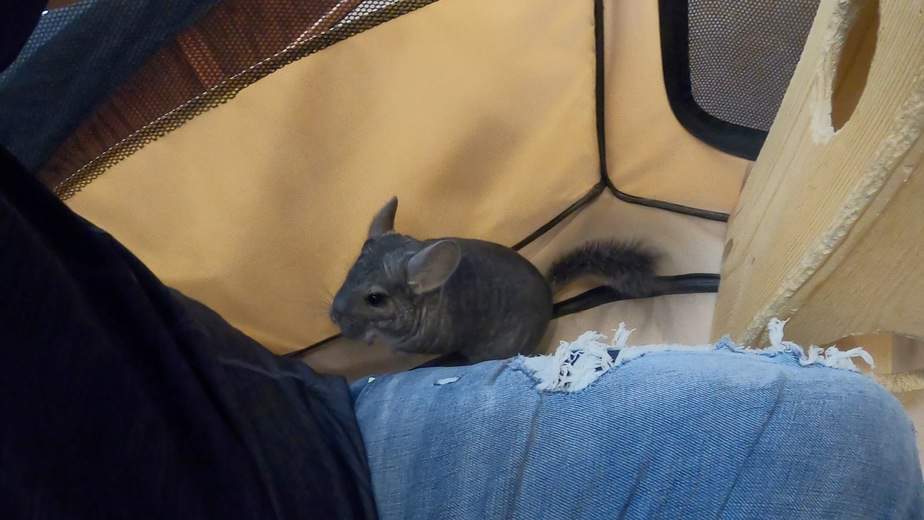
Chinchilla playpens can be an absolute life-saver for any new chinchilla owner. They allow you to create a safe space without doing any of the actual chinchilla proofing.
I currently use the Jespet 61 inch chinchilla playpen and I love it. More importantly, my chinchilla loves it!
You can see it in my post on the best play tents for chinchillas. It is the first model mentioned.
Playpens are breathable, easy to clean, and remove all dangers that your chinchilla could potentially find if they are free-roaming. Trust me, it’s a fantastic option and 100% eliminates the fear of your chinchilla chewing any wires or cords.
Other Considerations When Keeping Your Chinchilla Safe During Playtime
If you have wires that are tough to cover, perhaps behind a couch or other furniture, I have a few other tips you can implement to keep your chinchilla from having access to these cords.
Another trick I use is to make sure the legs on my furniture are removed.
For example, on my couch, I removed the legs so that my chin can’t run underneath the furniture and chew any cords. And, even worse, be in an area where it’s hard for me to stop her or prevent her from doing anything else she shouldn’t be doing.

Additionally, you can block other access in the room using other clever techniques.
Use tall enough boxes, or even baby gates, if you have potential areas in the room where your chinchilla could locate a cord.
Consider A Bathroom For Playtime
A lot of people just use a bathroom for chinchilla playtime. I’ve done it myself from time to time. I used this approach to keep my chinchilla away from wires before I purchased the playpen for my chinchilla that I referenced a moment ago.
A bathroom works fine, because it’s not necessary to create this big, magical room for your chinchilla to play in. A clean large chinchilla cage should be your chinchilla’s main hangout most of the day.
Playtime is designed for you and your chinchilla to bond and begin getting comfortable with one another.
A bathroom is usually free of cords and has nothing else dangerous with which your chinchilla can harm itself. As long as you close the toilet lid, of course.
Bathrooms also check the boxes we discussed previously by having hard floors, and they make it easy to keep an eye on your chinchilla during playtime.
Although I don’t use this method anymore, I still thoroughly recommend it, if it’s the only way you can keep your chinchilla safe from cords that it could potentially chew on.
Chinchillas Chew Wires: Final Thoughts
At the end of the day, whatever your chinchilla can get to, it will sniff and chew on, if possible. Wires and cords definitely fall into this category.
These rodents are curious and like to explore.
If they feel comfortable with you, they will likely not be hiding under fixtures or furniture and causing too many problems.
If you let your chinchilla out of the cage for a decent amount of time per day, the potential for danger is always be around. But you can reduce it considerably by guarding against some of their behaviors.
Be sure to wrap your electrical cords and never allow your chinchilla to play with cords or chew on them. This can ultimately lead to death and be a sad moment for everyone.
With the tips I’ve laid out in this post, you should be well on your way towards providing a safe, ethical, and perfect playroom for your chinchilla.
Chinchillas make great pets so take some time to set your home up correctly and enjoy the laughter and love they can bring to your lide.
Chili and I wish you the best of luck with your new chinchillas and the journey you have ahead of you.
Let’s hear from you now!
What are your thoughts on chinchilla proofing a room effectively and ensuring your chinchilla cannot chew wires?
Do you have any further recommendations I haven’t touched on in this post about how to keep your chinchilla safe from chewing wires?
Be sure to share those thoughts, stories, and concerns by dropping a comment below.
As always, Chili and I appreciate you stopping by and reading today and we will see you again next time!

Leave a Reply